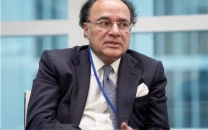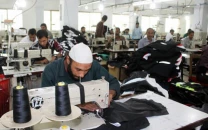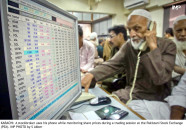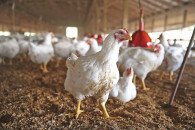Annual Plan 2011-12 : No concrete solutions to unemployment, poverty and energy crisis
Govt pins hopes on building consensus on imposition of taxes.

Pakistan’s economic outlook for the next financial year remains fragile and success of upcoming budget hinges on national consensus on levying taxes, netting wealth and improving governance, which seems to be over-ambitious in the wake of three-year track record of the ruling alliance.
An analytical look at the proposed Annual Plan 2011-12, available with The Express Tribune, depicts a gloomy picture that does not have solutions to increasing unemployment, poverty, power outages and a clear framework to address issues of corruption in the Federal Board of Revenue and bad governance.
The Annual Plan Coordination Committee will today (Friday) clear the document for approval of the National Economic Council, headed by the prime minister.
“The main focus of the fiscal policy during 2011-12 will be to bring fiscal deficit to a manageable level by evolving consensus among all stakeholders on the imposition of RGST, wealth tax, capital gains tax, bringing un-taxed services under the tax net, tax on agricultural income and addressing governance issues in resource mobilisation,” the plan reads.
Instead of taking a decisive action on levy of these taxes, the government has again left the matter on building national consensus - a similar policy that flopped recently when both the Pakistan Muslim League (Nawaz) and the Pakistan Peoples Party failed to come closer on the 10-point agenda.
Once again, restructuring of Pakistan International Airlines, Railways, Pakistan Steel Mills and power companies is part of the annual plan like in the outgoing fiscal year. However, there is not a constructive plan for the restructuring.
According to the plan, for financial year 2011-12 the government has targeted 4.2 per cent economic growth with 3.4 per cent contribution from the agricultural sector, 3.7 per cent from the manufacturing sector and 5.1 per cent from the services sector.
The government does not offer any plan to revive the flood-hit agricultural sector rather attaches all hopes to a “surge in international commodity prices” - terming it an incentive for poorly-educated farmers - and increase in land fertility due to floods.
For achieving industrial growth, the government is pinning hopes on increased demand for construction activities after the floods. It is going to offer “uninterested electricity tariffs for industrial zones” at the cost of other consumers, as there is no plan to increase generation.
Now on hopes of agricultural and industrial revival, without a concrete plan, the government expects that the services sector will get a boost and achieve a growth of 5.1 per cent.
The plan states, “Next year’s growth will rest primarily on revitalising the industrial sector, curtailing energy shortages and high interest rates that are presently discouraging private sector investment.”
Ironically, the plan negates itself at another point. It reads, “Fiscal stringency and tight monetary policy” will be followed to bring inflation down to 13 per cent. The plan targets to restrict inflation at 13 per cent against the target of 12 per cent set in the Budget Strategy Paper.
The government admits in the plan that due to new tax measures taken on March 15, the cost of agricultural production is likely to increase besides a spurt in inflation coming from increase in prices of petroleum products and electricity.
According to the plan, foreign investment will be highly dependent on law and order situation, introduction of reforms to create conducive business environment and increased competition in the domestic market.
The government also plans to let the rupee depreciate further against the US dollar in order to promote exports and manage imports. But the rupee depreciation would further swell the external debt and increase the cost of military hardware imports. Total public debt and liabilities have already crossed 68 per cent of gross domestic product, which is a violation of a parliamentary act that binds the government to keep the debt below 60 per cent.
The plan envisages $25.8 billion worth of exports and $38.1 billion worth of imports, resulting in $12.3 billion trade deficit. The current account deficit – the gap between external receipts and payments - is expected to remain at $1.4 billion in 2011-12.
Published in The Express Tribune, May 13th, 2011.



















COMMENTS
Comments are moderated and generally will be posted if they are on-topic and not abusive.
For more information, please see our Comments FAQ